The hunter Awang
Banned
- May 28, 2019
- 112
- 42
- Detector(s) used
- Fisher F75
- Primary Interest:
- All Treasure Hunting
Well, there does appear to be a fusion crust. Does it stick to a magnet?
Yes, that’s definitely 100% for sure a meteorite but it’s not an HED (Howardite/Eucrite/Diogenite). It’s an extremely rare primitive igneous ungrouped achondrite.
There is some fusion crust. The bright green crystals are pyroxene, surrounded a fine-grained high-silica matrix composed mainly of tridymite and cristobalite, indicative of quench melt. It won't be magnetic.
So… where did you find this?
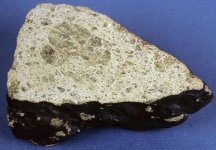
This is a museum specimen, this is the same family as the fist specimen, HED, It has a different peridotite color, yellow, green, View attachment 1810298
You think it s a meteorite? hhere are many meteorites, there are many meteorites, rare few, cheater a lot
@Red-Coat, I m not heroe to mess around, I m here to learm, Your knowledge is very good, What meteorite is this? View attachment 1811199 View attachment 1811200
The first of those two pictures is part of a meteorite. In fact it’s ‘Zagami’ found in Nigeria, a Martian basaltic meteorite in the Shergottite class. Shergottites are the most commonly found type within the overall rare grouping of Martian material.
The second specimen is not a meteorite. It appears to be largely clinopyroxene with some crystals of pigeonite. Terrestrial volcanic material which has undergone rapid cooling.
I’m answering your questions, so how about answering some of mine which, up to now, you have largely ignored or evaded. Let’s start again with:
“Why are you showing pictures of specimens which (presumably) are not your finds and asking if I know what they are? You must be trawling the internet for these pictures and presumably the source of the pictures already tells you what they are, so why are you asking me? If the pictures have come from respected sources (have they?) then is this not good enough for you?”
You arewrong, The second picture is a meteorite, It s a Martian meteorite, A forum is all about talking, very few posts, the second picture is a meteorite,
Well, I only have one picture to go on, you have provided zero information and I can only comment on what I see. From that picture, it doesn't appear to be a meteorite to me. You're just playing playing guessing games.
Tell me who has said it is a meteorite, what typology they have said it has and please provide the reference.
AND STILL YOU ARE NOT ANSWERING ANY OF MY QUESTIONS.
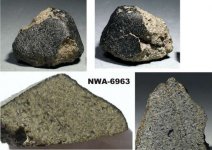
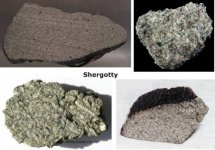
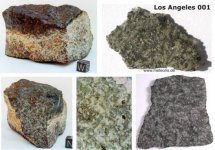
Well, I only have one picture to go on, you have provided zero information and I can only comment on what I see. From that picture, it doesn't appear to be a meteorite to me. You're just playing playing guessing games.
Tell me who has said it is a meteorite, what typology they have said it has and please provide the reference.
AND STILL YOU ARE NOT ANSWERING ANY OF MY QUESTIONS.
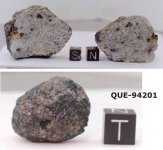
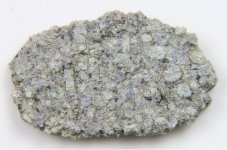
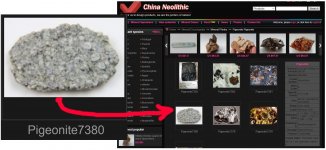
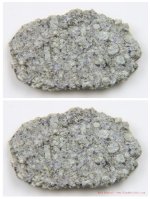

Oh dear, oh dear, oh dear. What ridiculous games you are playing.
This is the specimen you posted which you said was a Martian meteorite, and I said was not:
View attachment 1811643
I invited you to tell me who has said it’s a meteorite (apart from you) and to provide a reference source for that information. You haven’t done so. What you provided instead was another dozen pictures of things that are meteorites… none of which are the same specimen that you originally posted.
You then say “they're all the same mineral?” That at least is partially true.. although more accurately, they’re of mixed mineralogy with some commonalities. Those same commonalities also extend to Earth rocks since, for example, Martian basalts have many similarities to terrestrial basalts; pyroxenes are not exclusive to meteorites, they’re common in igneous terrestrial rocks; pigeonite is also a common mineral in terrestrial volcanic rocks if they have cooled rapidly.
Now we come back to the specimen you said was a meteorite and I said was not. While I accept that I am not infallible in identifying meteorites, you have provided no justification for your statement. Below, I have reproduced a screen-shot from the Chinese website “chinaneolithic”. It claims to be “The most professional mineral encyclopedia knowledge base, collecting more than 500 mineral datum and tens of thousands of minerals photos!”. Take a look at the specimen in their mineral gallery database at the bottom left corner, also enlarged by me.
View attachment 1811644
Does it look similar to the picture you posted? Oh. Wait a minute, if you click on the picture, you’ll see that it is exactly the same specimen. Here’s your picture and the picture from their website pictured together (your picture at the top):
View attachment 1811645
The specimen is in the pyroxene section of their image database and described as pigeonite of volcanic origin. Nowhere is there any mention of it being a meteorite from Mars, or anywhere else. I don't know where the original picture came from and accept that the description may be incomplete or even wrong... BUT if you have reliable evidence to suggest that both I and this website are wrong and that you are right then please produce a reference to that evidence.
Your move.
View attachment 1811646
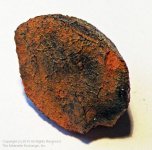
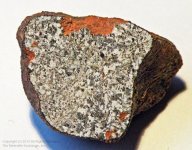

We don t talk about it, discussing this specimen, they have the same minerals
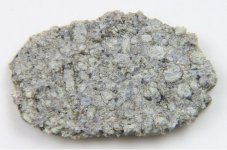

You're missing the point. Many meteorites have some of the same minerals which can be found in terrestrial rocks. But the form in which those minerals are present is different. Below is the specimen that you said was a meteorite, which I said is not.
View attachment 1811981
I have provided evidence which suggests that you are wrong. I am asking a simple question. What evidence do you have that it is a meteorite and can you provide a reference to that information?
This is the THIRD time that I have asked this question. I am still waiting for your answer.
View attachment 1811982
I can t prove it, You can t prove it, If you say no, no, can you tell me about your work?
So what you mean is that you just made it up. The only person who thinks it's a Martian meteorite is you.
For information, when you posted that picture and I replied saying it was not a meteorite, I already knew that it was in the 'chinaneolithic' mineral database as a non-meteorite. I just wanted to see what you would say about it when challenged. In my opinion, it's properly described on that website as a terrestrial volcanic pyroxene specimen with pigeonite crystals. If you disagree with that assessment then you can contact them and argue about it. Good luck.
I also checked my own (very large) database of meteorite specimens built up over many years and found no Martian specimen which matched your picture, either visually or mineralogically. It wasn't too difficult to check because the file metadata for the image you used shows the picture was taken on 05/02/2012, so I only had to check Martian meteorites for 2012 and earlier... and there aren't that many.
I don't have to prove it's not a meteorite. You have to prove it is. ..and you have miserably failed to do so. Just taking a picture from the internet and claiming it to be a Martian meteorite is an extraordinary claim for which extraordinary evidence is needed.